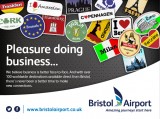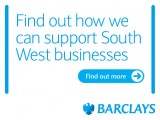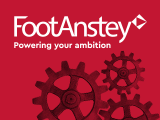Two of the largest firms in Bristol’s aerospace industry are set to benefit from the Government’s U-turn over the UK’s next-generation fighter aircraft.
As expected, Defence Secretary Philip Hammond today confirmed that the aircraft will be the jump-jet F-35B variant of the Joint Strike Fighter (JSF) – a move signalled by Bristol Business News on April 18.
This move benefits Rolls-Royce’s Patchway plans where the plane’s innovative short take-off and vertical landing (STOVL) technology is being developed.
GKN Aerospace at Filton is to produce precision machined titanium parts for UK defence giant BAE Systems, a principal subcontractor to the JSF’s US manufacturer Lockheed Martin.
The Filton plant, bought by GKN from Airbus just over three years ago, will work in partnership with a sister operation in St. Louis, USA. Filton will make 10 titanium structural parts for each JSF which will be assembled into the BAE-built aft and tail sections of the aircraft. The highly-complex parts are based on those used in commercial aijrcraft for a number of years.
The Government last year decided the Ministry of Defence should save money by ditching its multi-billion pound order for F-35Bs in favour of a longer-range, conventional take-off and landing variant.
However, that has now been scuppered by the soaring cost of adapting one of the new 65,000 tonne Queen Elizabeth-class aircraft carriers now under construction for conventional use with catapults and landing gear.
Original cost estimates of £400m for the work spiralled to nearly £2bn – and Mr Hammond today said the cost of switching the order back to the jump-jet version would be around £100m.
The U-turn was never critical to the Rolls-Royce’s Patchway plant, which is providing its LiftSystem system to US giant Pratt & Whitney’s STOVL version engine. Known as the 3BSM, this unique Rolls-Royce technology involves a swivelling jet pipe which enables short take-off and vertical landing.
Patchway is already committed to work on many hundreds of 3BSMs required primarily by US defence forces. The leading LiftFan customer is likely to be the US Marine Corps. In all, the US is expected to buy more than 2,400 JSFs, mainly the conventional variant which does not require the LiftFan.
The Patchway factory, where Rolls-Royce's defence business is based, is managing the overall 3BSM development and integration programme while an American Rolls-Royce team in Indianapolis is providing the system’s gearbox, clutch, driveshaft and nozzle and will conduct the build and verification testing of the LiftFan.
The UK's move back to the STOVL version of the F-35 was signalled earlier this year when UK defence joint chiefs of staff publicly petitioned Mr Cameron to change the order back to the F-35B citing lower cost, quicker implementation of fixed-wing carrier capability and the ability to operate both carriers, rather than just one, with fixed-wing aircraft.
Today's decision will bring forward by at least two years to 2018 the time when the UK can deploy its new aircraft carriers. However, Mr Hammond told the BBC’s World at One today that a decision about whether to make both new carriers operational, rather than just one, would not be taken until 2015. He said it would cost £60m a year to keep a second carrier operational so that Britain would always have one carrier at sea while the other was being refitted.






























